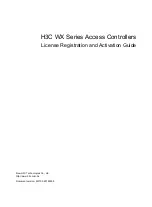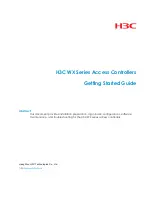MPC563XM Reference Manual, Rev. 1
806
Freescale Semiconductor
Preliminary—Subject to Change Without Notice
IPAC1,IPAC2 and OPAC1,OPAC2 - Input and Output Pin Action Control Registers
These registers determine the transition detections and output pin actions which takes place due to match
or transition events. Each field is three bit wide. After reset, the IPAC1/2 and OPAC1/2 registers are set to
000. IPAC1 and IPAC2 registers are mutually independent and have identical encoding, and so do OPAC1
and OPAC2.
shows IPAC and OPAC encoding. Note that transition detections are independent
from the output actions, but some options of output actions are triggered by transition detections. Output
actions can also be triggered by Matches. For a detailed definition of Transition Detections, see
Section 23.4.5.3, “Transition Detection and Time Base Capture
IPAC1/2 define the Transition events treated by channel logic. Although the name “transition” is
generically used for the transition detections, IPAC options 100 and 101 do not really detect transitions:
they actually sample the state of the input signal at the occurrence of the corresponding Match (Match1
used for IPAC1, Match2 used for IPAC2).
Output Pin Control Logic and Pin State Output Register - PSTO
The output signal control logic uses OPAC1/2, the Pre-defined Channel Mode (PDCM) and the User
Defined Channel Mode (UDCM), and the microcode Pin State Control (PSC and PSCS) fields. It is
responsible for setting the Pin State Output (PSTO) register to the specified logic value required by
microcode, by input events, or by Match1 and/or Match2 events. The PSTO register stores the driven pin
state determined by the Pin Control logic. The Output Buffer Enable signal, if used at MCU integration,
PSS
flag test on branch
on CHAN
assignment
no
BCC
n.a.
2
PRSS
flag test on branch
on CHAN
assignment
no
BCC
n.a.
3
1
see
Section 23.4.9, “Microinstruction Set
.”
2
PSS is PSTI or PSTO sampled on CHAN assignments and at thread start.
3
PRSS is PSTI sampled on channel service request.
Table 23-24. IPAC1/2 and OPAC1/2 Encoding
value
IPAC meaning
OPAC meaning
000
Do not detect transitions
Do not change output signal
001
Detect rising edge only
Match
010
Detect falling edge only
Match
sets output signal low
011
Detect either edge
toggles output signal
100
Detect input signal = 0 on Match
1
1
Match 1 is used for IPAC1/OPAC1, and Match 2 for IPAC2/OPAC2.
Transition sets output signal low
101
Detect input signal = 1 on Match
Transition detection sets output signal high
110
reserved
Transition detection toggles output signal
111
n.a.
2
2
On the microinstruction fields IPAC1/2 and OPAC1/2 this value is neutral, meaning that
IPAC/OPAC register values are not changed.
n.a.
Table 23-23. Pin Control Registers microcode accesses
Register
Access Type
Sampled
from channel
Update to
channel
Microcode
fields
1
Reset
value


















